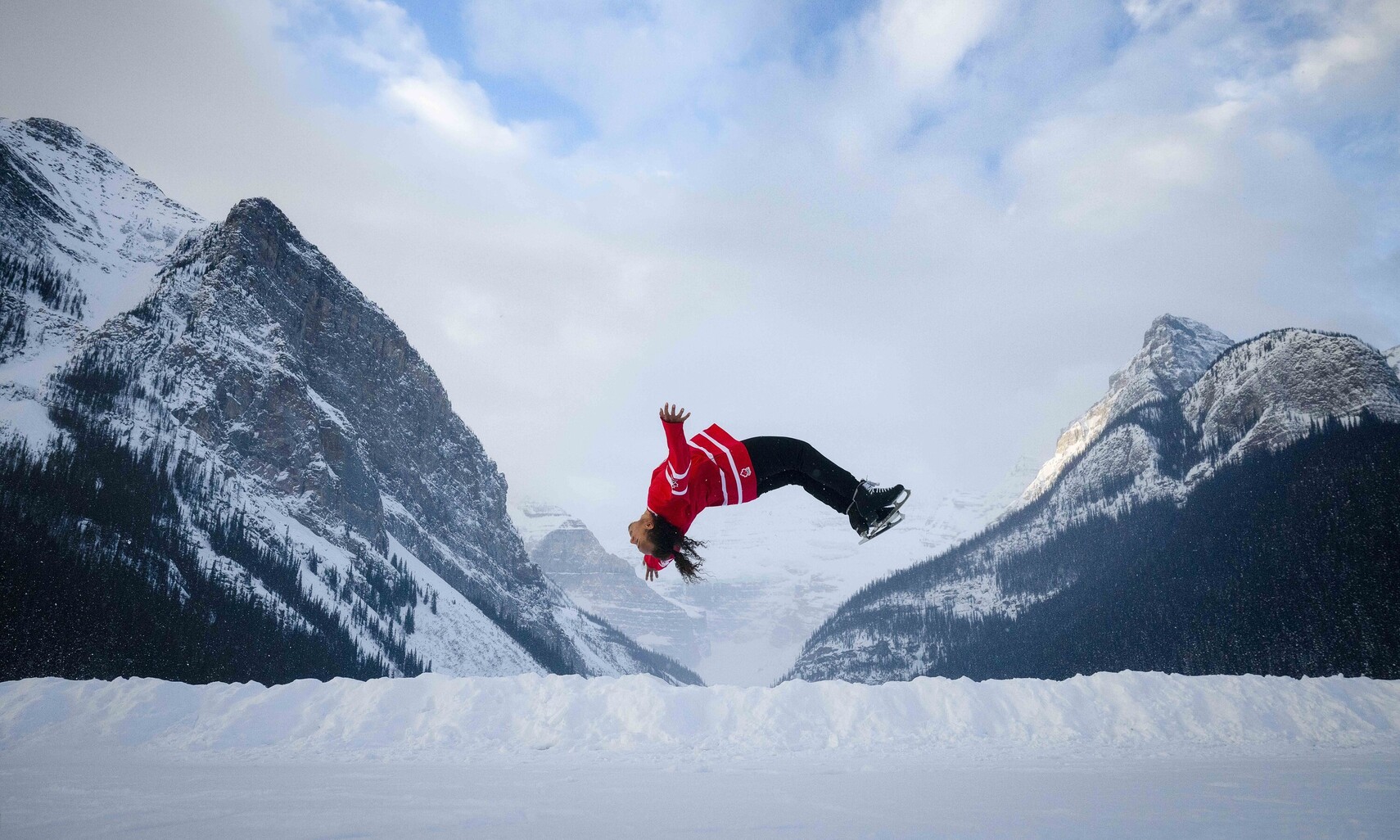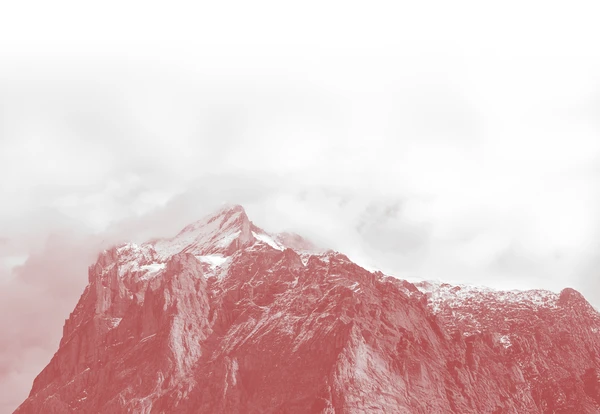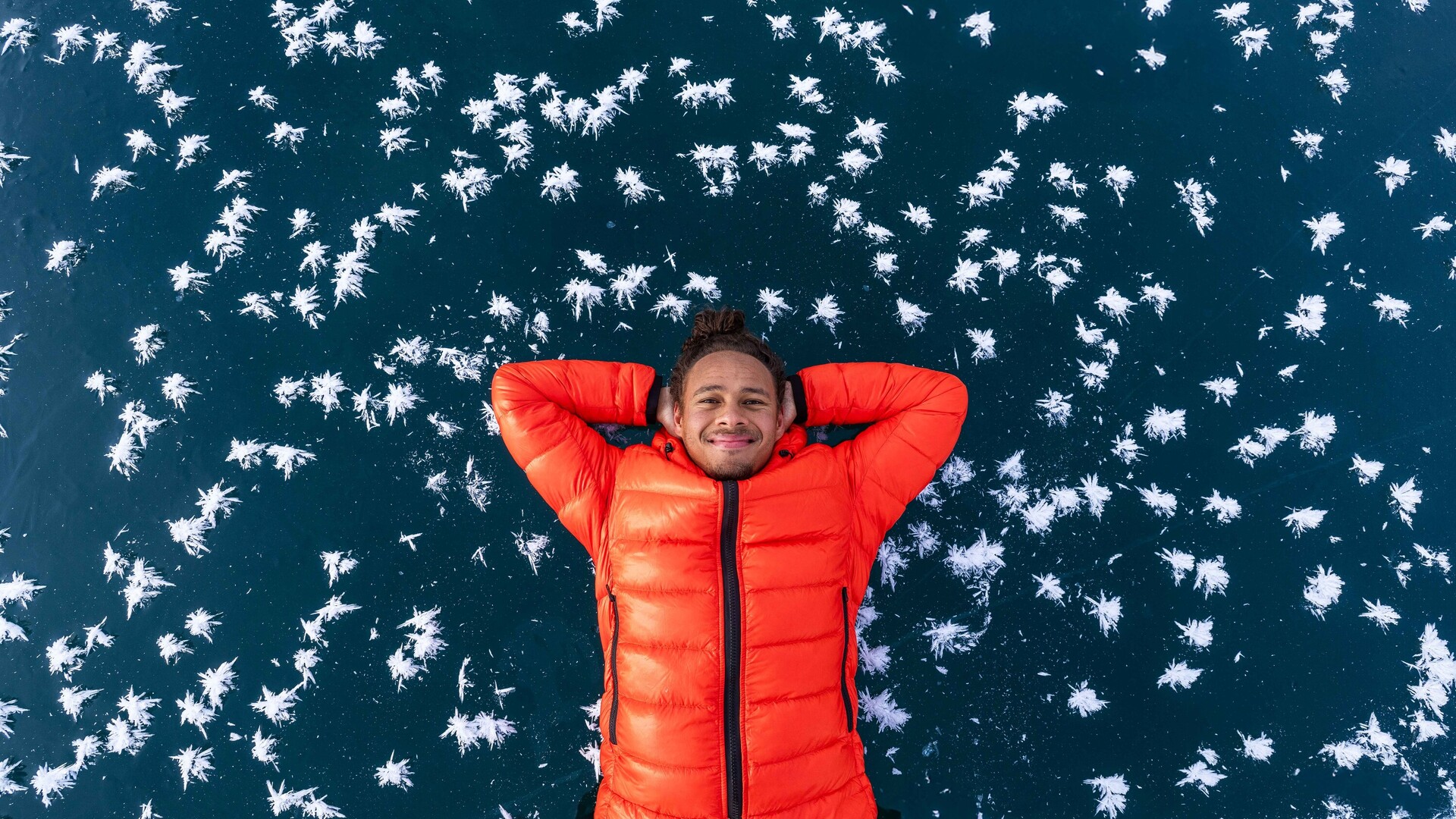
Ice Maestro
On wild ice, Elladj Baldé discovered something he’d been searching for throughout his competitive skating career—himself.
Snow-covered peaks. Pristine, crystal-clear ice. Blades carving across a frozen lake. In the midst of an icy wilderness, Elladj Baldé is completely in his element. Skating to hip-hop beats across endless expanses of wild ice, his breakdance-inspired moves captivated millions on social media during the pandemic.
That’s how filmmaker Mike Schwartz first discovered him: "I grew up in Minnesota, played hockey, and skated outdoors every winter. But when I saw a video of Elladj, I was blown away—first by the landscape, which is a dream for any skater, and second by the way he moves on the ice. I thought, I need to make a film with this guy."
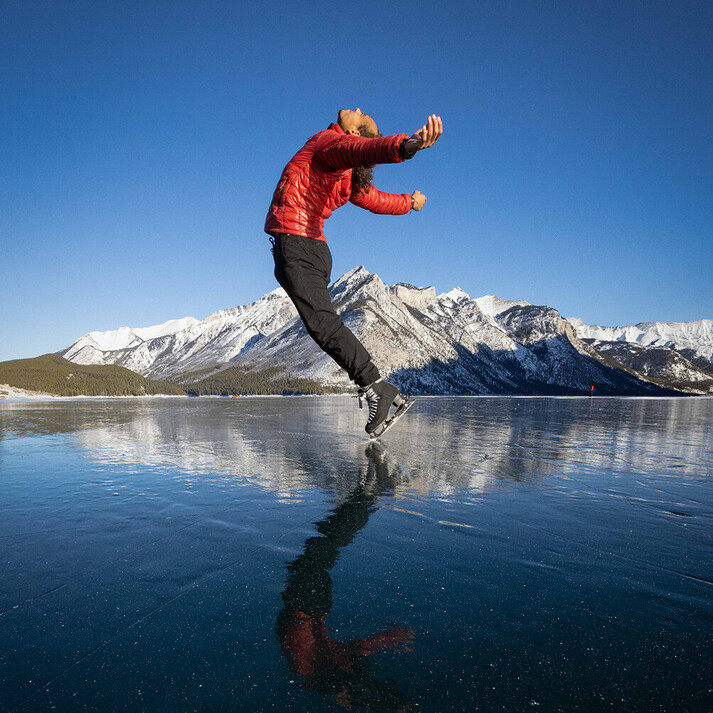
Elladj Baldé
Elladj spent his childhood and youth on an ice rink and came within reach of an Olympic nomination. In 2018, he retired from professional competition. During the pandemic winter of 2020, he went viral with clips of himself skating to pop music and doing backflips on frozen lakes. Since then, he’s partnered with major brands, performed in international ice shows, and cofounded the nonprofit Skate Global with his wife Michelle Dawley. The organization supports BIPOC youth in figure skating—providing financial assistance and, more importantly, access.
Now 34, Elladj has been skating since the age of seven. Born in Moscow to a Russian mother and a father from Guinea, he immigrated to Canada with his parents and two older sisters when he was two. He grew up in Montreal, where hockey is a national obsession. As a boy, Elladj often felt ashamed of figure skating. Instead of being proud, he hid his skates.
For over a decade, he competed for Team Canada. His life was packed with intense training, financial and mental pressure, injuries, high expectations, and a single dream: to one day skate in the Olympics. "There was a time when I didn’t know who I was anymore," he says. "I had this idea of who I should be to fit into the world of figure skating—but that wasn’t me. I fell into a really dark place. I remember thinking, Why am I still doing all this?"
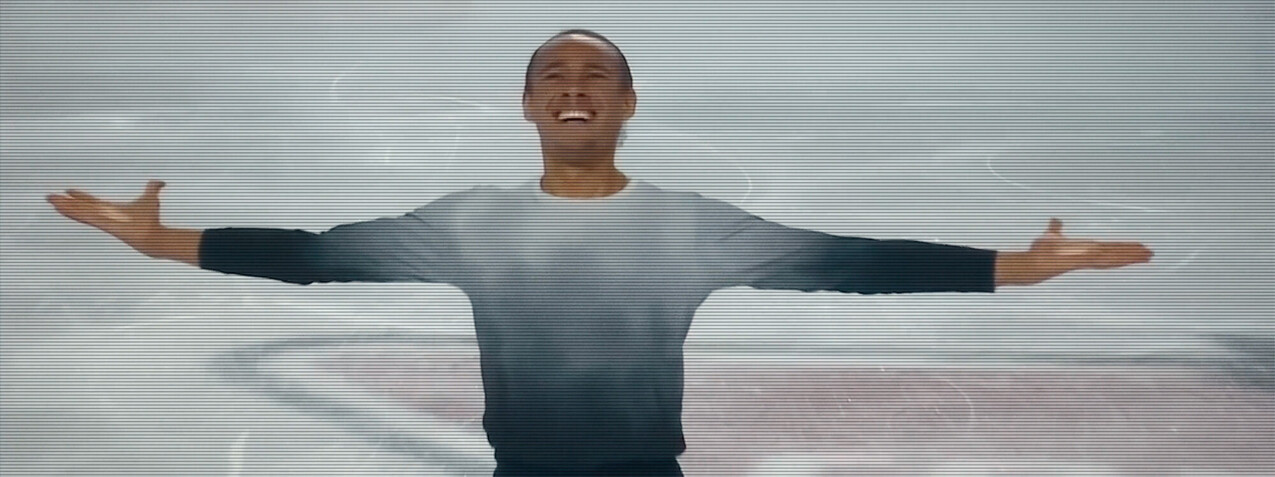
The turning point came when, at 24, he traveled to Guinea with his father to meet his family in Africa for the first time. "My relatives live really close to the land, up in the mountains, without electricity or running water. I spent two weeks there, and the sense of community was incredible—something I’d never experienced before. That trip changed my relationship to nature, and it changed my relationship to skating. I started asking myself: What if I do what I love most—on my own terms—and out on wild ice?"
That idea only became a reality after Elladj retired from competition and met photographer Paul Zizka, who showed him the best wild ice spots in the Canadian Rockies—and made sure they were safe. The moment Elladj stepped onto that first frozen lake, he was hooked. "I had never seen ice like that before, and I had never skated like that before. I knew right then: something is shifting for me."
The following season, Elladj returned to Lake Minnewanka—the first wild lake he’d ever skated on—with filmmaker and photographer Mike Schwartz, who had discovered him online. They had just two days to film.
Before sunrise, the small crew hiked across the snowy surface of the lake. "I was thinking, How are we supposed to skate here?" Mike remembers. "But Elladj said, ‘Trust me.’ We walked for 20 or 30 minutes across the lake until we found this perfect patch of ice. That’s when the endorphins kicked in and I knew it was going to be amazing. We talked briefly about what I had in mind, and then it all just came together naturally. No rehearsals, nothing forced."
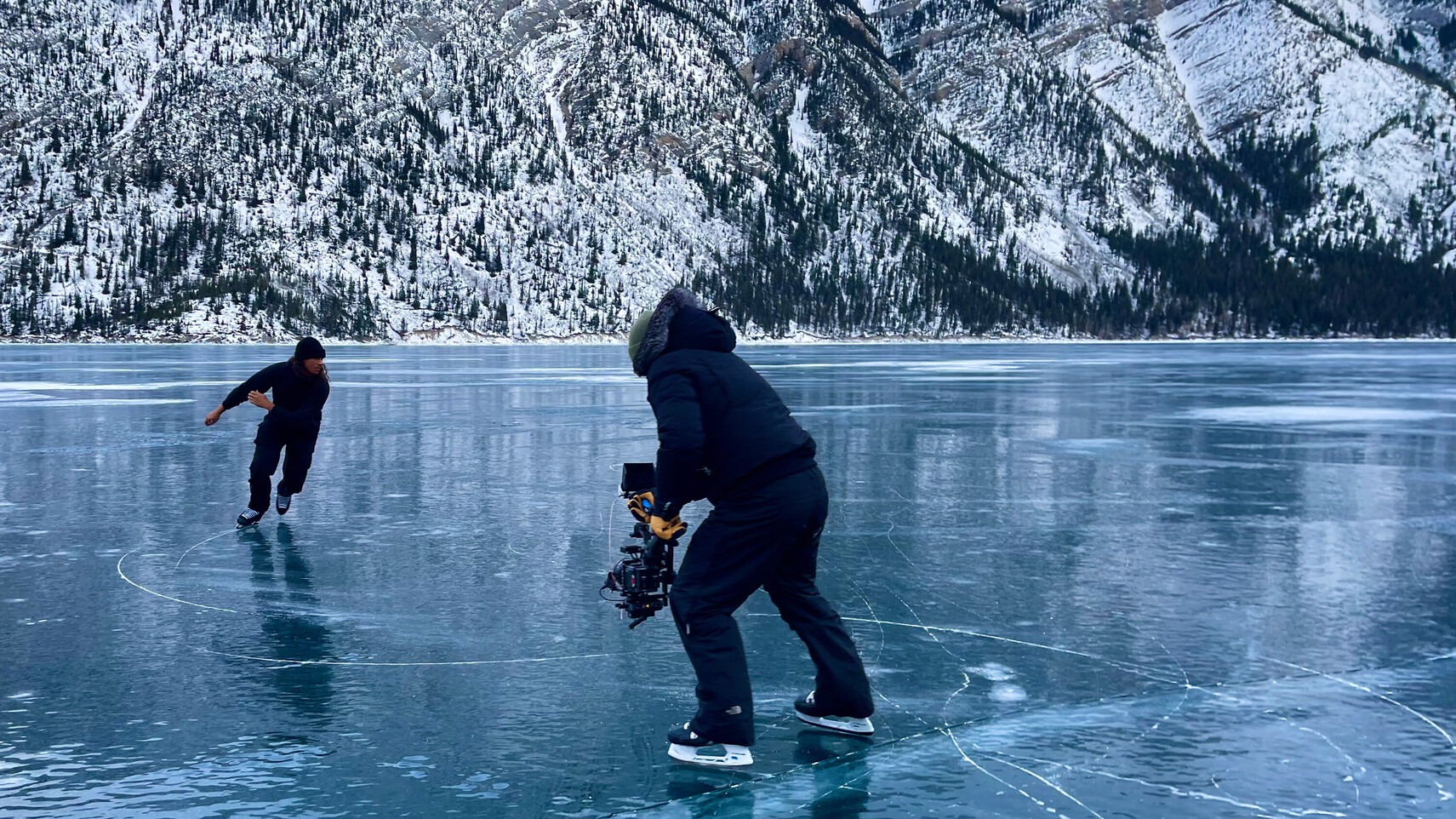
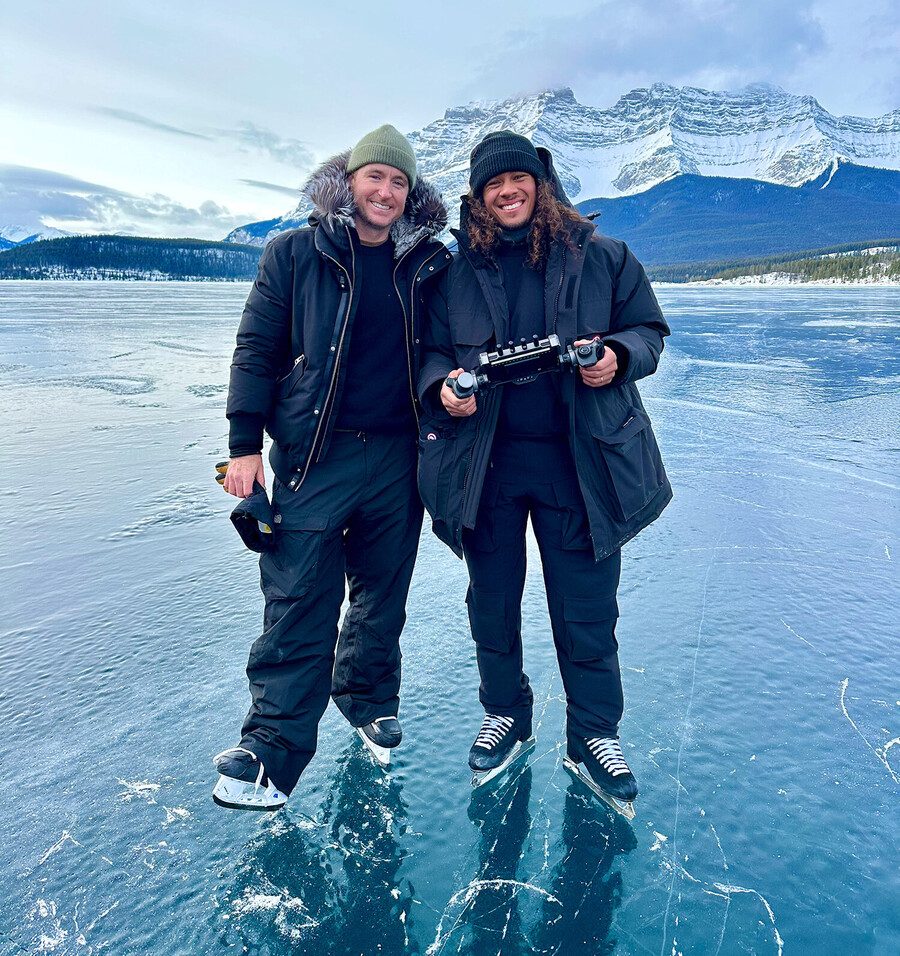
A Creative Match!
Filmmaker Mike Schwartz and Elladj Baldé on set at Lake Minnewanka. Luckily Mike used to be a hockey player. He was able to follow Elladj swiftly on the ice and capture stunning images with his camera.
Ask Elladj what draws him to skating in nature, and he doesn’t hesitate: "Nature and wild ice have a way of bringing you into the present moment, no matter what else is going on. I carry so much gratitude in my heart that I get to skate in places like this."
What Mike captures on camera is everything Elladj has come to stand for—being fully, unapologetically himself. His mission is to inspire people and challenge the idea that figure skating is only for a privileged, white elite. He wants to show that the sport has countless possibilities, and that everyone can make it their own. "For me, it’s about letting go of every role and boundary I’ve ever known," Elladj says. "It’s about truly feeling what it means to be free on the ice."
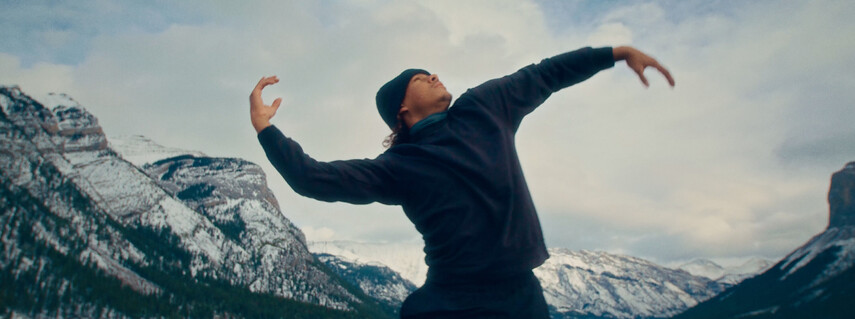
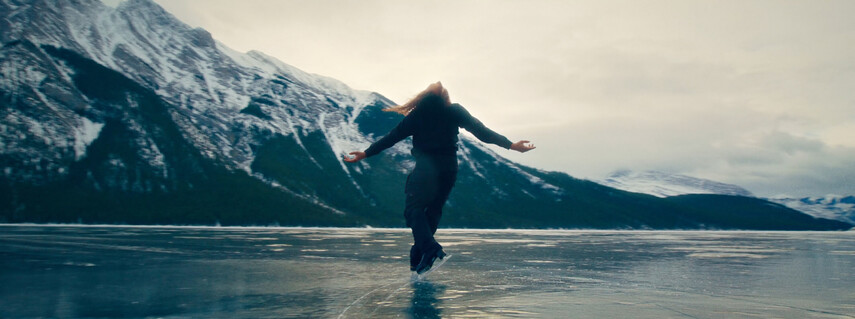
The backflip
For years, Elladj Baldé was known as "that guy who does backflips." It was his signature move, one he mastered at 15, and how he identified as a figure skater. But he’s since taken it out of his repertoire. "These past few years, I’ve started to feel my body aging, and some things just aren’t possible anymore. Doing backflips doesn’t feel good right now—afterward, I can’t walk for three days." It wasn’t an easy realization. "A few years ago, I was in a similar place. Back then, I let go of the idea that I had to be an Olympian. Now I have to let go of the belief that I’m a bad skater just because I can’t do certain tricks anymore."
The Backflip was banned from competitive figure skating for 48 years. While it was allowed in show performances, it was prohibited in official competitions. In 2024, the International Skating Union (ISU) officially lifted the ban, allowing backflips in competition once again.
